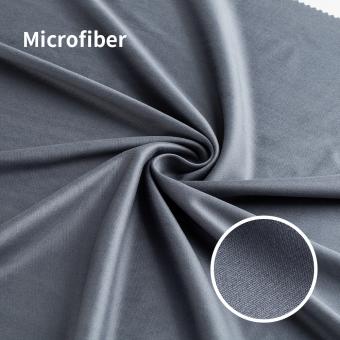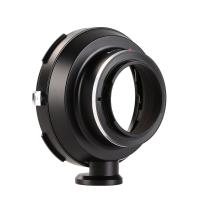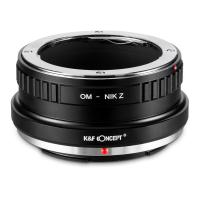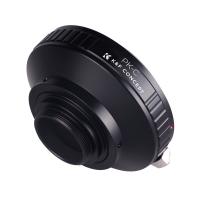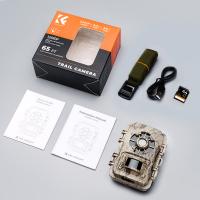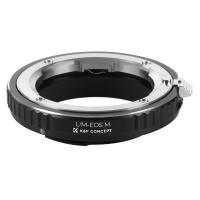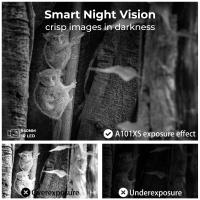How Is A Scanning Electron Microscope Image Formed ?
A scanning electron microscope (SEM) image is formed by scanning a focused beam of electrons across the surface of a sample. The electron beam interacts with the atoms in the sample, causing various signals to be emitted. These signals are then detected and used to generate an image.
When the electron beam hits the sample, it can cause the emission of secondary electrons. These secondary electrons are collected by a detector, and their intensity is used to create a topographic image of the sample's surface. This provides information about the sample's shape and texture.
In addition to secondary electrons, backscattered electrons are also emitted from the sample. These electrons have higher energy and are detected by a different detector. The intensity of backscattered electrons is used to create an image that provides information about the sample's composition and atomic number.
By scanning the electron beam across the sample and detecting the emitted signals, a detailed image of the sample's surface can be formed. This image can reveal fine details at a high resolution, making the SEM a powerful tool for studying the microstructure of materials.
1、 Electron Beam Generation
A scanning electron microscope (SEM) image is formed through a process that involves electron beam generation and interaction with the sample. The electron beam is generated by an electron gun, typically using a heated filament to release electrons. These electrons are then accelerated and focused into a narrow beam using electromagnetic lenses.
Once the electron beam is generated, it is directed towards the sample. As the beam interacts with the sample, several important processes occur. Firstly, the high-energy electrons in the beam collide with atoms in the sample, causing the emission of secondary electrons. These secondary electrons carry information about the surface topography and composition of the sample.
The emitted secondary electrons are then collected by a detector, such as an Everhart-Thornley detector, which converts the signal into an electrical current. This current is then amplified and used to generate an image on a display screen.
In addition to secondary electrons, backscattered electrons are also generated during the interaction between the electron beam and the sample. These electrons have higher energy and are deflected back towards the detector. By analyzing the intensity of backscattered electrons, information about the sample's atomic composition can be obtained.
Recent advancements in SEM technology have focused on improving resolution and imaging capabilities. For example, the introduction of field emission electron guns has allowed for the generation of a more focused and coherent electron beam, resulting in higher resolution images. Additionally, the development of advanced detectors and imaging techniques, such as energy-dispersive X-ray spectroscopy (EDS), has enabled the simultaneous collection of elemental composition data along with the SEM image.
Overall, the formation of a scanning electron microscope image involves the generation of an electron beam, its interaction with the sample, and the detection and processing of the emitted electrons. Ongoing advancements in SEM technology continue to enhance the imaging capabilities and provide valuable insights into the microscopic world.

2、 Sample Preparation
A scanning electron microscope (SEM) image is formed through a combination of sample preparation and the principles of electron microscopy. Sample preparation is a crucial step in obtaining high-quality SEM images.
Firstly, the sample needs to be properly prepared to ensure it is compatible with the SEM. This typically involves fixing the sample in a suitable medium, such as resin, to maintain its structure and prevent damage during the imaging process. The sample is then dehydrated using a series of alcohol washes and dried using a critical point drying technique or freeze-drying to remove any remaining moisture.
Next, the sample is coated with a thin layer of conductive material, such as gold or carbon, using techniques like sputter coating or evaporation. This coating is necessary to prevent charging of the sample surface when exposed to the electron beam, which can distort the image.
Once the sample is prepared, it is placed in the SEM chamber, and the electron beam is focused on the sample surface. The electron beam interacts with the atoms in the sample, causing the emission of various signals. These signals include secondary electrons, backscattered electrons, and characteristic X-rays.
Secondary electrons are low-energy electrons emitted from the sample surface due to the interaction with the primary electron beam. These electrons provide information about the sample's topography and surface features. Backscattered electrons, on the other hand, are high-energy electrons that are deflected back from the sample's atomic nuclei. They provide information about the sample's composition and density.
The emitted signals are then detected by various detectors within the SEM, such as the Everhart-Thornley detector for secondary electrons and the solid-state backscattered electron detector. The detected signals are converted into electrical signals, which are then processed and displayed as an image on a computer screen.
In recent years, advancements in SEM technology have led to the development of new techniques, such as environmental SEM (ESEM) and focused ion beam SEM (FIB-SEM). ESEM allows imaging of samples in their natural, hydrated state, providing insights into dynamic processes. FIB-SEM combines SEM with a focused ion beam to enable precise sample manipulation and 3D imaging.
Overall, the formation of an SEM image involves careful sample preparation and the utilization of electron beam interactions and detectors to capture and process the emitted signals. Ongoing advancements in SEM technology continue to enhance the capabilities and applications of this powerful imaging technique.

3、 Electron-Beam Specimen Interaction
A scanning electron microscope (SEM) image is formed through a process known as electron-beam specimen interaction. When an electron beam is generated in the SEM, it is focused onto the specimen surface. The interaction between the electrons and the specimen produces various signals, which are then detected and used to form an image.
The primary interaction that occurs is called elastic scattering, where the electrons in the beam collide with the atoms in the specimen. This scattering causes the electrons to change direction, and some of them are backscattered towards the detector. The intensity of the backscattered electrons depends on the atomic number of the elements in the specimen, with higher atomic numbers resulting in stronger backscattering. This information is used to create a grayscale image, where brighter areas correspond to higher atomic number regions.
In addition to elastic scattering, inelastic scattering also occurs. In this process, the electrons transfer energy to the atoms in the specimen, causing them to excite or ionize. The resulting secondary electrons and characteristic X-rays are also detected and used to form the image. Secondary electrons are low-energy electrons that are emitted from the surface, providing topographical information about the specimen. Characteristic X-rays are emitted when the atoms in the specimen return to their ground state after being excited, and their energy can be used to identify the elements present.
Recent advancements in SEM technology have focused on improving resolution and sensitivity. For example, the use of field emission electron sources and aberration correction techniques has allowed for higher resolution imaging. Additionally, energy-dispersive X-ray spectroscopy (EDS) detectors have become more sensitive, enabling the detection of even trace amounts of elements in the specimen.
Overall, the formation of an SEM image relies on the interaction between the electron beam and the specimen, with various signals being detected and used to create a detailed and informative image.
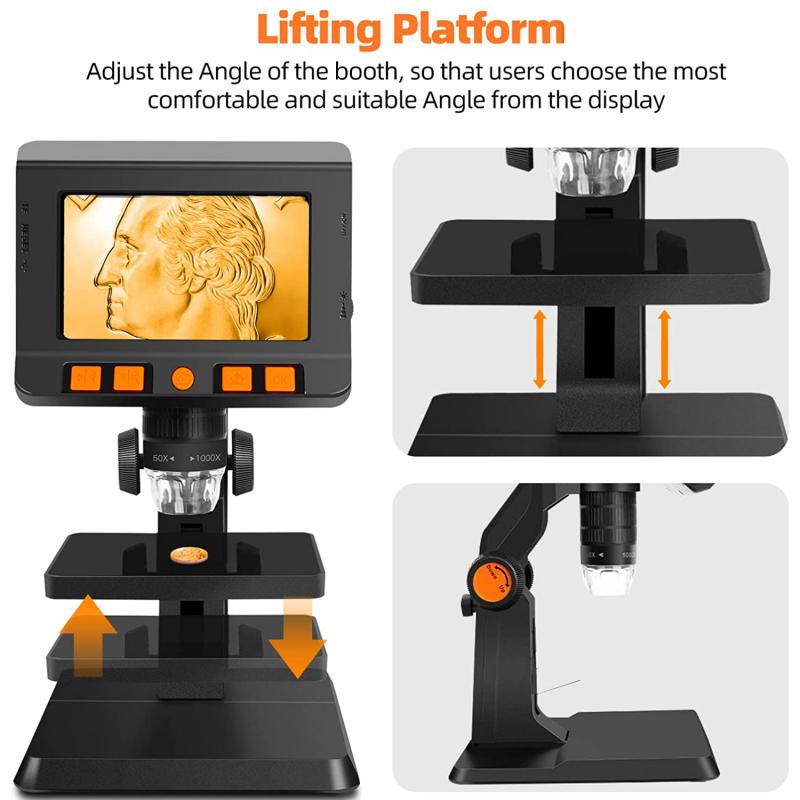
4、 Signal Detection and Amplification
A scanning electron microscope (SEM) image is formed through a process involving signal detection and amplification. The SEM is a powerful tool used to visualize the surface of a sample at high magnification and resolution. It operates by scanning a focused electron beam across the sample's surface and detecting the signals generated by the interaction between the beam and the sample.
When the electron beam interacts with the sample, several signals are produced. The primary signal is the backscattered electrons (BSE), which are electrons that are deflected back from the sample's surface. BSEs carry information about the sample's topography and composition. Additionally, secondary electrons (SE) are emitted from the sample's surface due to the beam-sample interaction. SEs provide information about the sample's surface morphology.
To form an SEM image, these signals are detected and amplified. The BSE and SE signals are collected by detectors positioned above the sample. The detectors convert the signals into electrical currents, which are then amplified to enhance their strength. The amplified signals are then processed and used to generate an image on a display.
In recent years, advancements in SEM technology have led to improvements in signal detection and amplification. For example, modern SEMs often employ solid-state detectors, such as scintillators or semiconductor detectors, which offer higher sensitivity and faster response times compared to older scintillation detectors. These detectors allow for more efficient signal collection and improved image quality.
Furthermore, the development of advanced signal processing techniques has enabled the extraction of additional information from the detected signals. For instance, energy-dispersive X-ray spectroscopy (EDS) can be integrated with SEM to analyze the elemental composition of the sample. This technique utilizes the characteristic X-rays emitted by the sample when it is bombarded with the electron beam.
In conclusion, a scanning electron microscope image is formed through the detection and amplification of signals generated by the interaction between the electron beam and the sample. Ongoing advancements in signal detection technology and signal processing techniques continue to enhance the capabilities of SEMs, allowing for more detailed and informative imaging.


















